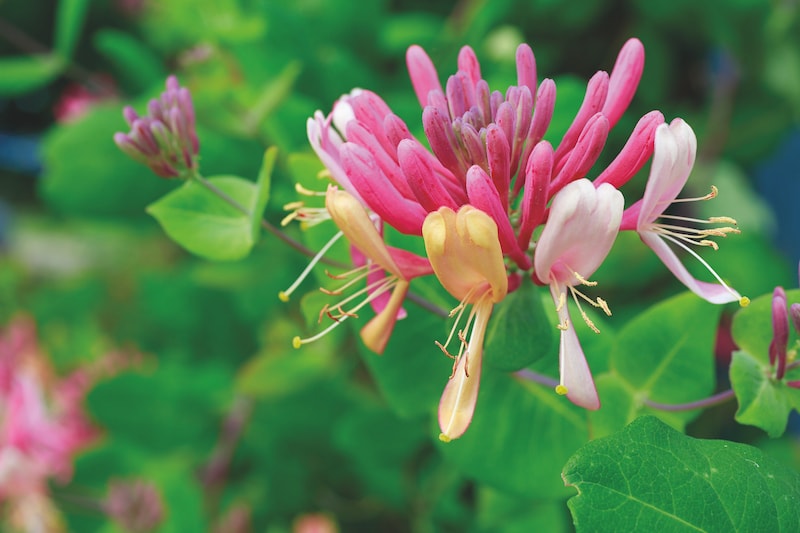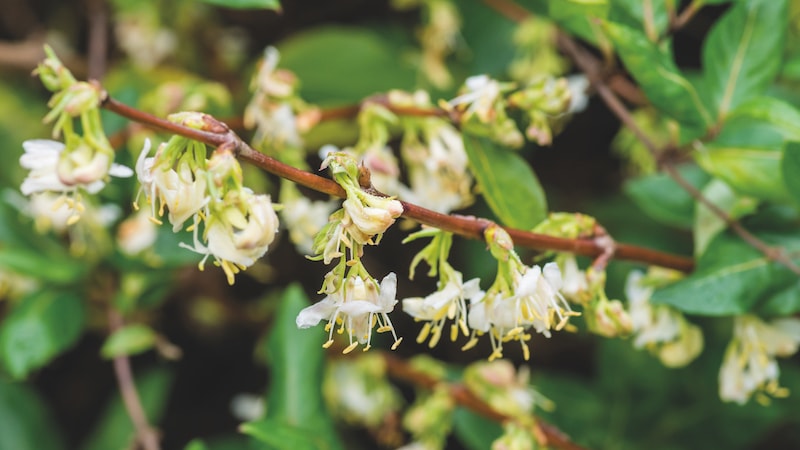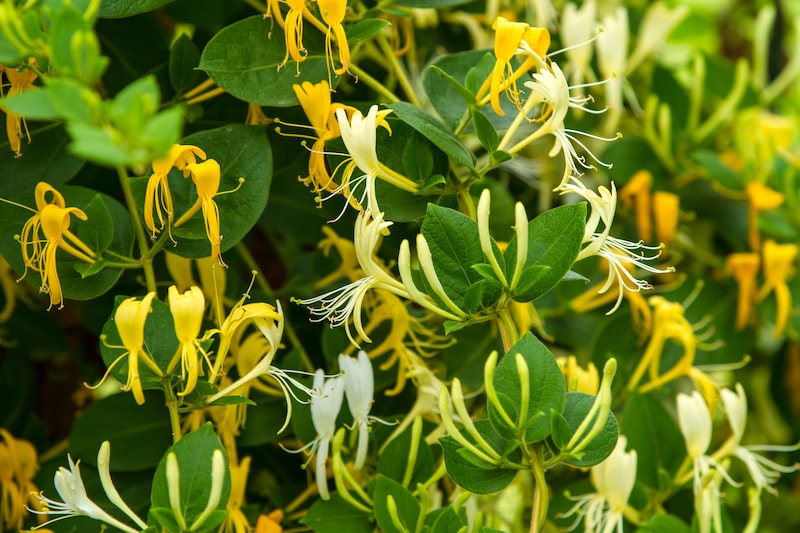Honeysuckle is a popular climbing plant that’s often seen scrambling up walls and fences, its tubular flowers blooming throughout summer and filling the garden with perfume. Winter-flowering honeysuckles, on the other hand, can be kept as neat hedges and even trimmed into topiary shapes.
Most honeysuckles are scented, with flowers ranging from white, yellow and orange to pink, red and purple. See the full range by scrolling through our collection of climbing plants. Whether you prefer climbing or shrubby, evergreen or deciduous, here’s everything you need to know about growing honeysuckles.
When to plant honeysuckle
Honeysuckles can be planted at any time of year but, for best results, avoid planting in summer as young plants can become heat-stressed and take longer to establish.
These plants love dappled shade and a sheltered location – too much shade can stop the plant producing flowers, while excessive sunlight increases the risk of leaf scorch and aphid attack.
Where to plant honeysuckle

Image: Honeysuckle ‘Serotina’ from Suttons
Good drainage is important and honeysuckles will not do well in waterlogged soil. They tolerate most soil types and can be grown in containers, but for the best results try to plant them in the ground. If growing in a pot, they will need regular watering and feeding to thrive. Honeysuckles are hardy plants and overwinter outside as long as they’re in a sheltered position.
When planting your honeysuckle it’s important to make sure it has enough room to scramble. Climbers tend to grow vigorously and need some kind of support such as a mesh or trellis. Fix your supports about 5cm away from the surface of your fence or wall to create space for the plant to grow and improve airflow.
How to plant your honeysuckle

Image: Lonicera ‘Fragrantissima’ from Suttons
When preparing to plant out your honeysuckle, water it well and then dig a hole as deep as the height of the container. Break up hard soil around the hole so the roots can more easily grow out, and dig in some compost if it’s heavy or sandy. Climbing honeysuckles need to be planted around 30-60cm away from the wall or fence.
Carefully tease out the roots, especially if they’re very congested when you take it out of its pot. Plant your honeysuckle at the same level as it was grown in the container, fill in the soil and firm around the root ball with your heel. Give it another good watering and add a sprinkle of blood, fish and bone feed.
How to care for honeysuckle plants

Image: Lonicera ‘Celestial’ from Suttons
Water your young honeysuckle regularly through its first spring and summer to help the plant settle in and establish strong roots, giving it an occasional soak during dry spells. If you’re growing honeyberries, (the only edible honeysuckle berries) keep an eye on your plants in the spring, as a dry start to the year might require additional watering to help fruit develop.
Honeyberries also need pollinators in order to fruit, so plant other winter- and spring-flowering plants nearby to attract bees and other pollinating insects. Alternatively, you can pollinate the flowers by hand by gently brushing inside the flowers with a soft paintbrush.
Honeysuckle benefits from an annual feed of general fertiliser in spring (or late winter for honeyberry). An annual mulch of well-rotted compost or manure improves the soil and helps to retain moisture.
How to prune honeysuckle plants

Image: Lonicera kamtschatica ‘Kalinka’ from Suttons
Climbing honeysuckles need gentle pruning and training to stop them getting congested. Remove any weak or damaged growth, and trim back any long shoots growing in the wrong direction. As your honeysuckles get established, different varieties will require pruning at different times. Prune late-flowering types in spring, and early-flowering types right after flowering.
Shrubby honeysuckles also benefit from pruning after flowering. If growing as a hedge, clip into shape over two or three sessions between spring and autumn, taking care not to disturb any nesting birds.
Young honeyberry plants (less than three years old) should only be trimmed to remove dead and damaged stems. Later, cut out old shoots from the base to make way for new growth, and trim the tips off young shoots to encourage more flowers.
A relatively trouble-free plant to grow, honeysuckles occasionally suffer from powdery mildew in prolonged hot and dry weather. Mulching around the base with garden compost helps to guard against this by improving moisture retention. Check young shoots in spring for signs of aphid attack.
A cottage garden favourite, honeysuckle is a gloriously scented and colourful plant to cover a fence or scramble over an arch. Take a look at our full range of cottage garden plants here.
Lead image: Lonicera japonica ‘Hall’s Prolific’ from Suttons
Last Updated on November 8, 2024 by Suttons Horticultural Team





